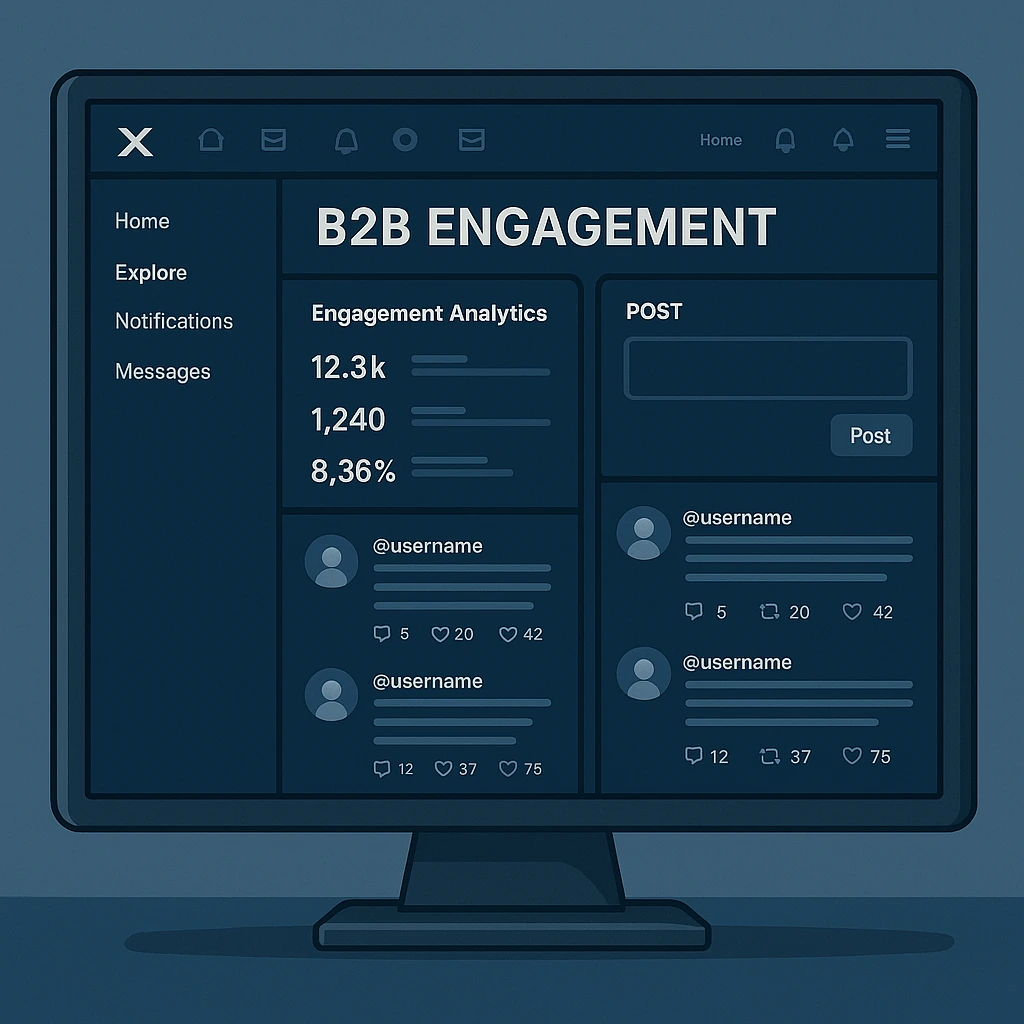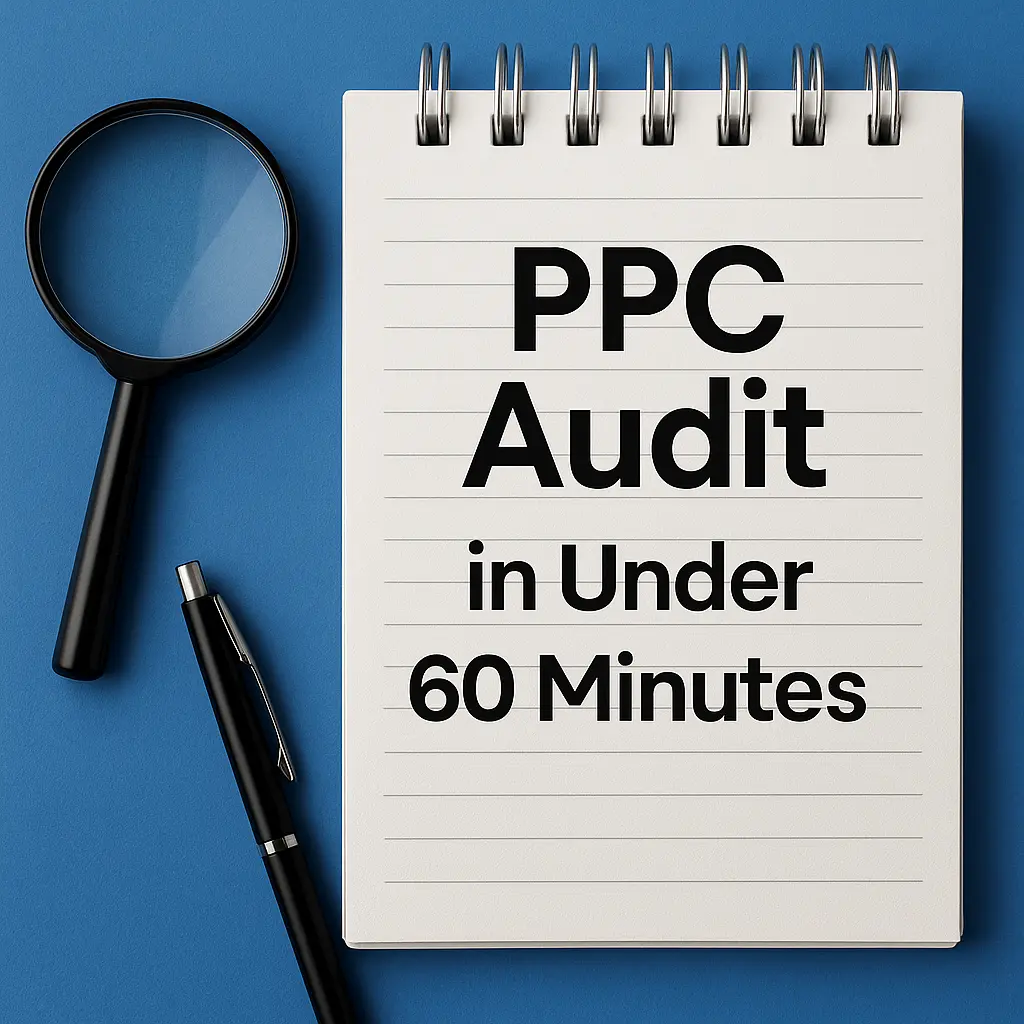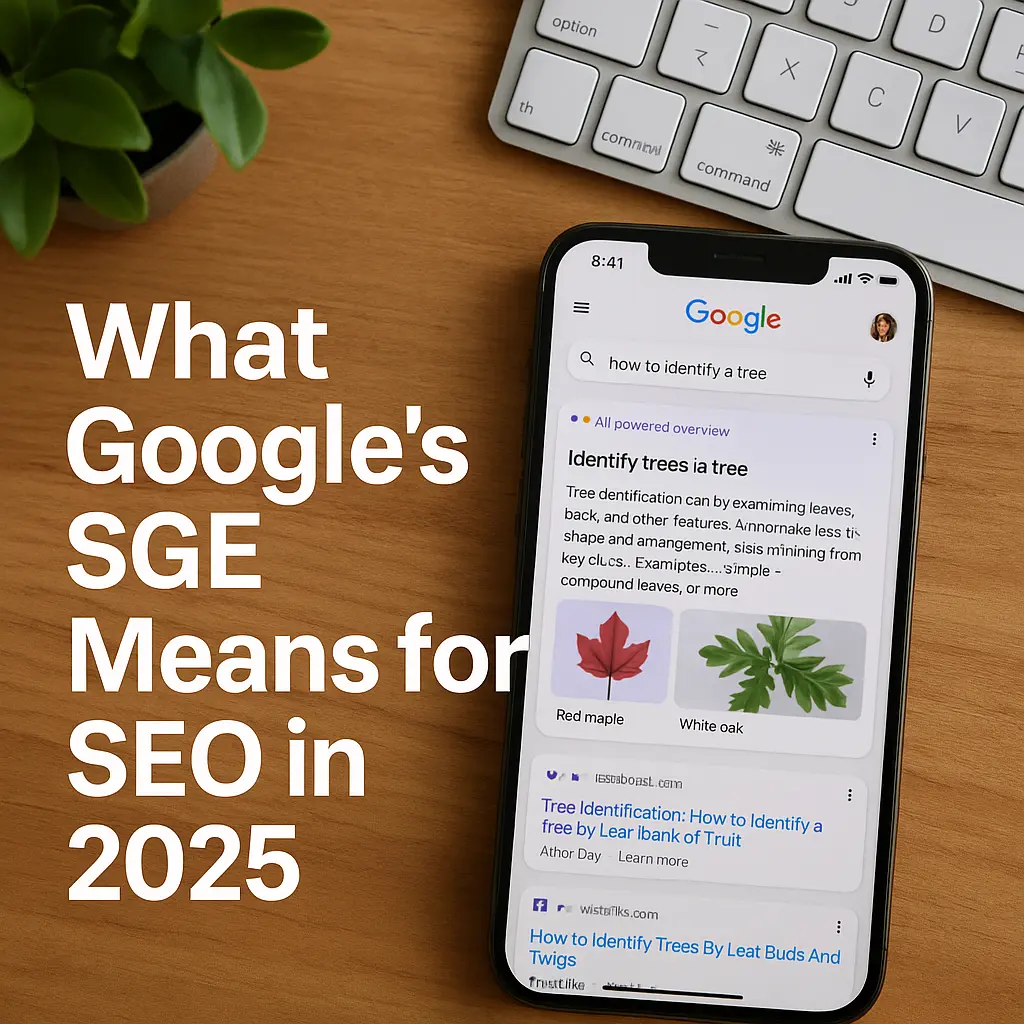Table of Contents
Introduction
Let’s face it: B2B social media often gets a bad rap for being dry, uninspired, and, frankly, forgettable. While B2C brands dazzle with vibrant visuals and witty captions, many B2B companies treat their social presence as a mere checkbox—an obligatory task rather than a strategic tool. But here’s the truth: B2B doesn’t have to be boring. In fact, with the right approach, social media can become a powerful avenue for building brand personality, fostering trust, and driving meaningful engagement.
This article is your guide to transforming your B2B social media from a snooze-fest into a dynamic extension of your brand. We’ll explore how to craft a bold brand voice, leverage platforms like LinkedIn and Twitter for maximum impact, and use storytelling to captivate your audience—all while staying true to your business goals. Whether you’re a founder looking to humanize your company or a marketing team aiming to stand out in a crowded space, these insights will help you create content that resonates.

Why B2B Social Media Matters
In the digital age, social media isn’t just for B2C brands selling trendy products; it’s a critical space for B2B companies to establish thought leadership and build relationships. According to a Hootsuite report, 75% of B2B buyers use social media to research potential vendors. This means your online presence isn’t just a nice-to-have—it’s often the first impression a potential client or partner will have of your business.
Moreover, platforms like LinkedIn and Twitter offer unique opportunities for B2B social media to connect with decision-makers directly. Unlike traditional advertising, social media allows for two-way conversations, enabling brands to address pain points, share expertise, and show personality in real-time. The challenge? Standing out in a sea of generic corporate posts. That’s where creativity in B2B marketing comes into play.
Developing a Bold Brand Voice
What Is Brand Voice, and Why Does It Matter?
Your brand voice is the distinct personality and tone that shines through in every piece of content you create. For B2B companies, it’s easy to default to formal, jargon-heavy language, but that often alienates audiences. A well-defined brand voice humanizes your company, making it more relatable and memorable to your target audience.
Start by asking: What values define your company? Are you innovative, dependable, or perhaps a bit unconventional? Use these traits to shape how you communicate. For example, a tech solutions provider might adopt a confident, forward-thinking tone, while a logistics firm could focus on reliability and clarity.
Steps to Create a Consistent Brand Voice
- Audit Your Current Content: Review your existing posts to identify inconsistencies in tone or messaging.
- Define Your Personality: Choose 3-5 adjectives (e.g., professional, approachable, witty) that reflect your brand.
- Create Guidelines: Develop a style guide for your team with examples of dos and don’ts for social media posts.
- Train Your Team: Ensure everyone involved in content creation understands and can apply the brand voice.
A consistent brand voice builds trust and recognition over time. It’s not about being overly quirky or casual—it’s about being authentic to who you are as a business while engaging your audience in meaningful ways.

LinkedIn Strategy for B2B
Why LinkedIn Is the B2B Powerhouse
LinkedIn is the go-to platform for B2B social media, with over 900 million users, many of whom are decision-makers and industry professionals. According to LinkedIn’s own data, 80% of B2B leads come from the platform. This makes a solid LinkedIn strategy non-negotiable for any business looking to connect with other businesses.
Top Tips for a Winning LinkedIn Presence
- Optimize Your Company Page: Use a professional profile photo, a compelling banner, and a detailed “About” section that highlights your value proposition.
- Post Regularly with Value: Share industry insights, whitepapers, or quick tips that position your brand as a thought leader.
- Engage Actively: Respond to comments on your posts and engage with content from your network to boost visibility.
- Leverage Employee Advocacy: Encourage team members to share company content, as personal profiles often get more reach than business pages.
Creative B2B marketing on LinkedIn doesn’t mean memes or viral stunts—it means delivering content that sparks discussion. Ask questions in your posts, share polls, or highlight niche industry trends to drive social engagement.
Content Ideas for LinkedIn
| Content Type | Example | Expected Outcome |
|---|---|---|
| Behind-the-Scenes | A day-in-the-life post about your team working on a project | Builds trust and humanizes your brand |
| Industry Insights | A quick analysis of a recent market report | Establishes thought leadership |
| Success Stories | A client testimonial or case study snippet | Showcases credibility and results |
Twitter Tactics for Engagement
Why Twitter Works for B2B
Twitter may seem like a casual platform, but it’s a goldmine for real-time conversations and networking in the B2B space. With its fast-paced nature, Twitter allows brands to join trending discussions, share bite-sized insights, and connect directly with industry leaders. Social engagement on Twitter often happens through retweets, replies, and hashtags, making it a perfect place to amplify your brand voice.
Strategies to Stand Out on Twitter
- Use Hashtags Strategically: Participate in industry-specific hashtags like #B2BMarketing or #TechSolutions to increase visibility.
- Be Conversational: Respond to mentions, retweet relevant content, and ask followers for their opinions on hot topics.
- Share Quick Wins: Post short, actionable tips or stats that your audience can use immediately.
- Join Twitter Chats: Engage in weekly chats related to your niche to network and gain followers.
The key to Twitter is brevity with impact. Focus on delivering value in 280 characters or less, and don’t shy away from showing a bit of personality—humor or timely cultural references can work if they align with your brand.

Storytelling Over Promos
The Problem with Constant Promotion
One of the biggest mistakes B2B companies make on social media is focusing solely on product pitches or service promos. While it’s important to showcase what you offer, constant self-promotion can turn followers off. According to a Sprout Social study, 57% of consumers unfollow brands that post too many promotional messages.
How Storytelling Captivates Audiences
Storytelling, on the other hand, draws people in by creating emotional connections. For B2B, this could mean sharing the journey of how your company solved a complex client problem, or highlighting the human side of your business through employee stories. Creative B2B marketing thrives on narratives that reflect your values and expertise.
Examples of Storytelling in Action
- Client Success Stories: Share a detailed case study of how your solution transformed a client’s operations.
- Founder’s Journey: Post about the challenges and triumphs that led to your company’s founding.
- Industry Impact: Narrate how your work contributes to broader industry trends or innovations.
Stories don’t just entertain—they build trust. When done right, they position your brand as not just a vendor, but a partner in your clients’ success.
Involving Key Stakeholders
Why Stakeholders Matter in Social Media
Your social media content shouldn’t just come from a faceless corporate account. Involving key stakeholders—founders, employees, and even clients—adds authenticity and credibility. People trust people more than brands, and seeing real faces behind your business fosters a stronger connection.
Ways to Include Stakeholders
- Founder Spotlights: Share posts or videos where founders discuss industry trends or company vision. This builds thought leadership and personalizes your brand.
- Employee Takeovers: Let team members take over your social accounts for a day to share their experiences or expertise.
- Client Features: With permission, highlight client testimonials or collaborative projects to showcase real-world impact.
By amplifying the voices of those closest to your business, you create a multi-dimensional brand personality that resonates with your audience. Just ensure all content aligns with your overarching brand voice to maintain consistency.

Measuring Success
Key Metrics to Track
To ensure your B2B social media efforts are paying off, you need to track the right metrics. It’s not just about likes or follower counts—focus on indicators that tie back to your business goals.
| Metric | What It Measures | Why It Matters |
|---|---|---|
| Engagement Rate | Likes, comments, shares, and clicks per post | Shows how well your content resonates with your audience |
| Lead Generation | Clicks to landing pages or form submissions | Indicates if social media is driving business outcomes |
| Website Traffic | Visits to your site from social channels | Measures how effectively you’re directing followers to learn more |
| Brand Sentiment | Tone of comments and mentions | Reflects public perception of your brand |
Tools for Tracking Performance
Use platforms like LinkedIn Analytics, Twitter Analytics, or third-party tools such as Hootsuite or Sprout Social to monitor your progress. Regularly review your data to refine your LinkedIn strategy or Twitter tactics, ensuring you’re always optimizing for social engagement.
For further reading on social media analytics, check out this HubSpot guide on measuring social media ROI.
Conclusion
B2B social media doesn’t have to be a dull, formulaic exercise. By embracing a bold brand voice, crafting a targeted LinkedIn strategy, leveraging Twitter for real-time engagement, and prioritizing storytelling over endless promos, your business can stand out in a crowded digital landscape. Involving stakeholders like founders and clients further humanizes your brand, while tracking key metrics ensures your efforts align with strategic goals.
Looking ahead, the future of B2B marketing lies in authenticity and connection. As platforms evolve and audiences demand more transparency, companies that invest in creative, personality-driven content will build lasting relationships and trust. So, ditch the cookie-cutter posts and start experimenting with ways to make your brand unforgettable. The opportunity to redefine B2B social media is yours—seize it.
Ready to discover more? contact us for a no obligation discovery call here.
How much time should B2B companies dedicate to social media marketing?
The ideal time investment varies by company size and industry, but recent data suggests allocating 15-20 hours per week is typical for an effective B2B social media strategy. According to a 2023 Content Marketing Institute report, successful B2B companies spend an average of 40% of their marketing budget on content creation and distribution, with social media being a significant component.
For smaller teams, focus on quality over quantity by dedicating at least 5-7 hours weekly to creating thoughtful content and engaging with your audience. Enterprise organizations often have dedicated social media teams spending 30+ hours weekly across multiple platforms.
Remember that consistency matters more than volume. A 2022 HubSpot study found that B2B companies posting 2-5 times per week on LinkedIn saw 2x more engagement than those posting daily with lower-quality content. Ultimately, your time investment should align with your specific business goals and available resources.
Which social media platforms deliver the best ROI for B2B companies?
LinkedIn consistently delivers the highest ROI for B2B companies, with 80% of B2B social media leads coming from this platform according to LinkedIn’s own data. A 2023 Gartner report found that LinkedIn drives 3x more conversions than other social platforms for B2B brands.
Twitter (now X) ranks second, particularly for tech and service-based industries, with 59% of B2B marketers reporting it as valuable for thought leadership and industry conversation. According to Forrester Research, B2B decision-makers are 152% more likely to be active on Twitter than the average user.
While often overlooked, YouTube deserves consideration with B2B buyers watching an average of 7.3 videos during their purchase journey (Google/Millward Brown Digital). For specialized industries, platforms like Reddit and Quora are gaining traction, with 46% of B2B marketers reporting positive results from these platforms in 2023.
Focus your efforts where your specific audience is most active rather than trying to maintain a presence everywhere.
How can B2B companies measure the actual business impact of social media beyond engagement metrics?
To measure true business impact, B2B companies need to look beyond vanity metrics and establish clear attribution models. Start by implementing UTM parameters on all social media links to track which platforms and campaigns drive website traffic, with tools like Google Analytics 4 providing detailed conversion path analysis.
Lead attribution is critical – according to Demand Gen Report, 53% of B2B marketers now track social media-sourced leads through their full pipeline journey. Modern CRM systems like Salesforce or HubSpot can help attribute revenue directly to social media touchpoints.
For measuring brand impact, consider surveying new customers about their buyer journey – a 2022 Edelman study found that 64% of B2B decision-makers conduct research on social media before contacting sales, even if they don’t click through directly.
Some companies are adopting more sophisticated methodologies like marketing mix modeling (MMM) or multi-touch attribution (MTA) to understand social media’s influence alongside other channels. The most advanced approach combines quantitative metrics with qualitative feedback from sales teams about how social content influences deal progression.
What types of B2B content perform best on social media in 2025?
Original research and data-driven content have emerged as top performers, with LinkedIn reporting that posts containing original research receive 94% more engagement than standard promotional content. According to Edelman’s 2023 B2B Thought Leadership Impact Study, 64% of decision-makers say thought leadership content is more effective at demonstrating expertise than traditional marketing.
Video content continues to gain importance, with short-form, educational videos (under 2 minutes) generating 150% more engagement than text-only posts across platforms. LinkedIn reports that video is shared 20x more often than other content formats on their platform.
Case studies and client success stories transformed into visual formats perform exceptionally well – Forrester found that 73% of B2B buyers find case studies valuable when researching potential vendors. When presented as visual carousels or infographics, these see 3x higher engagement than text-only versions.
Content that humanizes your brand is increasingly effective, with employee-generated content receiving 8x more engagement than corporate content according to LinkedIn’s internal data. Posts featuring behind-the-scenes glimpses of company culture or team expertise build authenticity and trust with potential clients.
How can small B2B companies with limited resources compete with larger enterprises on social media?
Small B2B companies can effectively compete by focusing on niche specialization rather than broad reach. According to a 2023 Edelman-LinkedIn study, 63% of decision-makers say they’re more likely to consider a vendor who articulates a clear vision and specialized expertise in solving their specific problems.
Leverage your agility advantage – small companies can respond more quickly to industry trends and news. Data from Sprout Social shows that B2B brands that comment on industry developments within 24 hours see 2.5x higher engagement than delayed responses.
Employee advocacy is a cost-effective amplification strategy. Research from MSLGroup found that content shared by employees receives 8x more engagement than content shared through company channels. Encourage your team to share and engage with your content to extend organic reach.
Consistency trumps volume – a 2022 Content Marketing Institute study found that B2B companies posting high-quality content 2-3 times weekly on a single platform outperformed those posting lower-quality content daily across multiple platforms. Focus your limited resources on creating exceptional content for one primary channel before expanding.
Smart use of user-generated content and client testimonials builds credibility without massive production costs. According to TrustRadius, 53% of B2B buyers rate peer reviews as the most valuable content during their research phase.
What are the most common B2B social media mistakes and how can they be avoided?
The most prevalent mistake is over-promotion without providing value. According to Content Marketing Institute, 74% of B2B content is overtly sales-focused, yet Edelman research shows that 47% of decision-makers will disengage from brands that are consistently self-promotional. The solution is implementing the 80/20 rule – 80% educational or informative content, 20% promotional.
Inconsistent posting is another critical error. A LinkedIn study found that B2B companies posting less than once weekly experienced 45% lower engagement rates than those maintaining consistent schedules. Develop a content calendar and use scheduling tools to maintain presence even during busy periods.
Not leveraging analytics for optimization represents a missed opportunity. Gartner reports that 67% of B2B marketers don’t regularly analyze their social performance data. Schedule monthly performance reviews to identify high-performing content types and refine your approach.
Failing to engage with comments and mentions undermines relationship-building. According to Sprout Social, B2B brands that respond to social inquiries within 4 hours see 3x higher conversion rates than those responding after 24+ hours. Dedicate time for community management, not just content creation.
Many B2B companies also make the mistake of using overly technical language. A 2022 Forrester study found that 65% of decision-makers prefer content that explains complex concepts in straightforward terms. Use industry terminology judiciously and focus on clarity over jargon.
How is AI changing B2B social media strategy and content creation?
AI is transforming B2B social media in several key ways. For content creation, 62% of B2B marketers now use AI tools for generating initial drafts, headline testing, and content optimization according to a 2023 Salesforce survey. These tools are particularly valuable for creating data-driven content, with companies reporting 40% time savings in content production.
Personalization at scale has become more sophisticated, with AI-powered tools analyzing audience behavior to deliver tailored content. LinkedIn reports that personalized content receives 72% higher engagement rates than generic posts. Modern AI systems can now segment audiences based on industry, job title, and engagement history to serve relevant content automatically.
Predictive analytics represents another significant advancement, with 54% of enterprise B2B companies using AI to identify optimal posting times and content types. According to Forrester, companies using AI-powered social listening tools see a 25% increase in engagement rates through more timely and relevant posting.
While AI offers efficiency gains, human oversight remains essential. A 2023 Edelman study found that 71% of B2B decision-makers could identify content created entirely by AI without human refinement, and 68% viewed it less favorably. The most effective approach combines AI-assisted content generation with human expertise, creativity, and brand voice alignment.





